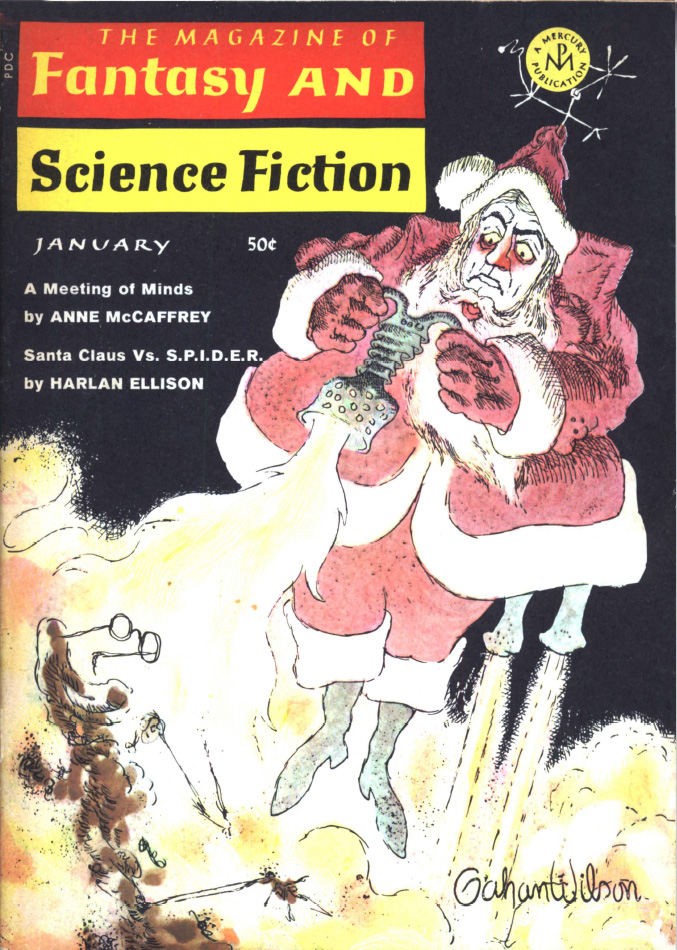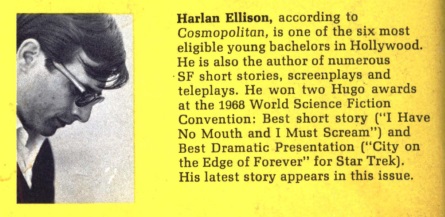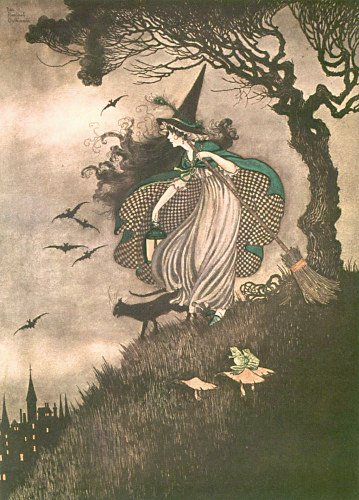
by Gideon Marcus
Where'd you get those peepers?
Few things excite the imagination more than adventures in space. In particular, we love to hear about doings in the cosmos that can't be done on Earth. And one of the main things we can't do on Earth is see the sky.
Oh sure, when you look out at the starry night, you think you're witnessing infinity. In fact, your eyes barely apprehend a tiny fraction of the electro-magnetic spectrum. We are blind to radio waves, to ultra violet, to X-rays, to infrared. Our sophisticated telescopes are similarly handicapped. Even the mighty 200 inch telescope on Mount Palomar can't see in most of light's wavelengths, for they are blocked by the Earth's atmosphere. In the X-ray, ultraviolet, infrared, and cosmic ray bands, the glass seeing-eye tubes are as sightless as we are.
Which is why the launch of the Orbiting Astronomy Observatory (OAO) on December 7, 1968, was such an exciting event. Dubbed "Stargazer", it is the very first space telescope.

Well, technically, it's the second. The first one went up on April 8, 1966, but its power supply short circuited shortly after launch, and it never returned any data. This is a shame, as there were some nifty experiments on board, including a gamma ray experiment similar to the one carried on Explorer 11, another gamma ray counter supplied by NASA's Goddard center, and a Lockheed-made X-ray counter. But, the main experiment, a set of seven telescopes designed to look in the ultraviolet spectrum, provided by the University of Wisconsin, was duplicated for OAO-2.
This telescope cluster will be used for long-term observation of individual stars, something that only recently became possible with the perfection of star tracking technology. In addition, the Smithsonian has provided an additional package of four telescopes for the investigation of large masses of stars, up to 700 per day, to get an overall UV map of the sky.
Think of how revolutionary it was when the first radio observatories began mapping the heavens. We learned about the existence of quasars and weird storms on Jupiter and also a lot more about the stars we had been observing visually for centuries. Stargazer is about to give us a whole new view of the universe.
That's exciting—truly science fiction made fact!
Jeepers Creepers
While we wait to see what excitement OAO 2 returns from the heavens, let's turn to the latest F&SF to see what terrestrial treasures await us this month.

by Gahan Wilson
A Meeting of Minds, by Anne McCaffrey
We return to the world of "The Lady in the Tower", one of my favorite McCaffrey stories, for the lead story this issue.
Damia, the daughter of that first story's protagonist, is 20 and humanity's strongest telepath. As tempestuous as she is beautiful and brilliant, she has refused the attentions of men, holding out for something…better.
That's when she meets Sodan, an alien inexorably approaching the Terran sphere from far, intragalactic space. Thus ensues a completely mental courtship, and Damia becomes infatuated with the foreign entity. But Afra, an experienced mentalist, who has been secretly in love with Damia for ages, is suspicious. What if the being is simply manipulating Damia so that Earth's greatest defense will be neutralized?
The stage is set for a cosmic battle, and a realignment of Damia's priorities.
I really wanted to like this story. I was anticipating an "Is There in Truth no Beauty?" romance where two beings find love despite fundamental physical differences. Instead, the viewpoint shifts from Damia's to Afra's early on, and all we get is his certainty that Sodan is up to no good, which is vindicated. Then, after the battle, Damia realizes the worthy that's been under her nose this entire time and, of course, gives him her love.
Of late, there has been a shallowness to the emotion displayed in McCaffrey's writing that just puts me off. Also, a sort of petty volatility. All of her characters snipe at each other constantly. But the real nadir of the story comes at the end:
Shyly, her fingers plucking nervously at her blanket, Damia was unable to look away from an Afra who had altered disturbingly. Damia tried to contemplate the startling change. Unable to resort to a mental touch, she saw Afra for the first time with only physical sight. And he was suddenly a very different man. A man! That was it. He was so excessively masculine.
How could she have blundered around so, looking for a mind that was superior to hers, completely overlooking the fact that a woman's primary function in life begins with physical submission?
I feel like if Piers Anthony had written that, we'd have given him the Queen Bee. Two stars.
A Brook in Vermont, by L. Sprague de Camp
De Camp muses poetically on the Carboniferous, and what future beings, millions of years hence, will burn the coal being formed today.
I think the author missed a real opportunity to imply that we would be the anthracite mined in the far future, suggesting that we run the very real risk of leaving nothing to the ages but our combustibility.
Three stars as is.

by Gahan Wilson
Black Snowstorm, by D. F. Jones
This is nothing more, nothing less, than an extremely well-told story of a plague of locusts. There's no satire, no metaphor, no literary experiments. Both shoes drop simultaneously, though slowly, gradually, rivetingly.
Five stars.
Unidentified Fallen Object, by Sydney Van Scyoc
One day, a small UFO falls with the snow, and a precocious teen boy picks it up to examine. As he handles the small craft, flakes of it come off, perhaps sliding into his very pores. Soon, he begins to radiate a frightful miasma, inciting hatred in all approach him.
Including his teacher, who has also touched the fell ship…
"Object" is a chilling, effectively written little horror. It's not particularly to my taste, and it's a bit one-note, so it's just a three-star story for me. Others may find more to like (for those who enjoy a sense of dread).
How I Take Their Measure , by K. M. O'Donnell
In the future, everybody's on relief…or administering it. This is a little slice-of-life story about a sadistic relief worker, who gets off on the tenterhooks he hangs his relief applicants on. No Brock, George C. Scott's kindhearted social worker from East-Side, West-Side; this guy is a real bastard.
This is my favorite story about terminal unemployment that I've read since one in IF a decade ago (the one about the guy who gets a job tightening all the screws on the buildings in the cities—which have been systematically unscrewed by some other schnook the night before…).
Four stars.
Santa Claus vs. S. P. I. D. E. R., by Harlan Ellison

Here's St. Nick like you've never seen him before. In the style of Ian Fleming's James Bond series (though not Edward S. Aaron's Sam Durrell, Harlan offers up Agent Kris Kringle, a hard-stomached, oversexed, lean killer whose red suit is filled with every lethal device known to Elfkind. His nemesis is S.P.I.D.E.R., an international organization devoted to evil. This time, their nefarious scheme involves mind control: they have brainwashed LBJ, HHH, Nixon, Daley, Reagan, and Wallace into doing the most horrid deeds, and only the jolly agent from the North Pole can defeat them.
Okay, it's a bunch of silly fluff, probably written between bonafide adventure yarns Ellison probably writes under another name like "Rod Richards" or "Length Peters". I did appreciate how every cruddy thing in the world is ultimately attributable to S.P.I.D.E.R.—humanity is basically good and cuddly. Only the nefarious "them" subvert our goodness.
I've often noted that comic books and spy novels offer an easy way out for readers. It's tough to deal with everyday problems, with economic malaise, with systemic issues that cause crime and misery. How much easier to topple the goon of the week to get our cathartic kicks. Ellison lets us know he understands the flavor of his own cheek with the subtlety within the broadness.
That said, it's a one-note joke, and once you've gotten the punchline, I don't think the story bears much rereading, especially since it is so very much of a very specific moment in our history (as Judith Merril notes in her book column, August 1968 already feels like an age ago).
Three stars.
The Dance of the Satellites, by Isaac Asimov
The Good Doctor continues his examination (see last month's piece) of what the Galilean moons of Jupiter might look like from the innermost moon, Amalthea. This time, he focuses on eclipses, the appearance of the moons in Jupiter-shine, and more.
Interesting cosmic data, of use to writers and laymen alike. Four stars.
The Legend and the Chemistry, by Arthur Sellings
The 3607th (or was it 3608th) interstellar exploration mission from Earth seems like it will be yet another humdrum operation. In all the expeditions, though many aliens have been found (most humanoid), all have been planetbound, none of them having reached our space traveling level of technology.
This latest planet is no exception, its humaniform denizens possessing a primitive tribal culture. But they have no less pride than any other race. What happens when the very existence of far superior beings constitutes an unpardonable affront? And who is responsible for the catastrophe that ensues?
A decent, moralistic yarn from the late, great Arthur Sellers. This may well be his last work published (unless he has a posthumous career like Richard McKenna) as he died recently. While Legend is not the best thing he's ever written, it has its own kind of power.
Three stars.
Wild ride
There are a lot of vicissitudes in this first F&SF of the year. The strong points cancel the weak points, and the magazine ends in positive territory, but because the lack of consistency makes things a bit sloggish.
Well, that's why I do this, right? To be your guide to ensure you only get the highlights!

![[December 22, 1968] What wonders await? (January 1969 <i>Fantasy and Science Fiction</i>)](https://galacticjourney.org/wp-content/uploads/2023/12/681222cover-672x372.jpg)



